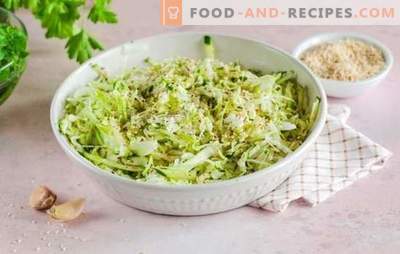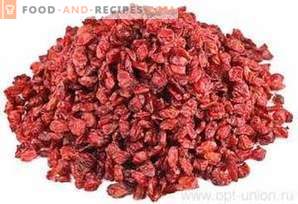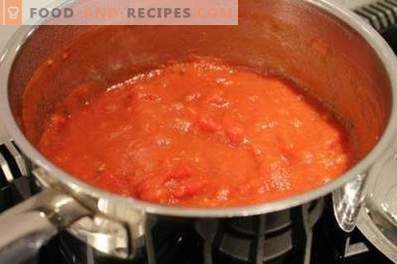
Probably no better known spice than cumin. Although many confuse it with dill, because cumin, like dill, belongs to the umbrella plants and they have very similar leaves and seeds. But dill is an annual plant, and caraway seeds ripen within two years. At the end of this period fragrant seeds appear, the aroma of which really resembles the smell of dill in the flowering stage.
Cumin can grow almost anywhere with a temperate climate, so it is grown in many countries.
Useful properties of cumin
- Cumin seeds are rich in essential oils, thanks to which they have a spicy flavor similar to dill. But unlike dill, cumin has a sharper, bitter taste.
- Cumin contains useful trace elements: zinc, iron, copper, molybdenum, strontium, manganese, nickel.
- There is a lot of vitamin C in its greenery.
- Cumin Seeds are a tonic.
- They improve the appetite.
- Cope with fermentation in the intestine.
- Cumin seeds have a carminative, laxative, choleretic effect.
- It is recommended for stomach ulcers, as well as a means of enhancing the separation of bile.
- Broth of cumin seeds increases lactation in lactating mothers.
- In addition to the healing properties, cumin has excellent taste, so it is successfully used in the food industry.
- It is a desirable additive to other foods in the diet.
Cumin in Cooking
Cumin in dishes used by chefs from around the world. This spice is popular in Asian, Indian, Mediterranean, Mexican cuisine. Although other ethnic groups also add cumin to their national dishes with pleasure. He is able to improve the taste of any food.
Unlike other spices that are good only in certain dishes, cumin can be added to dishes of meat, vegetables, as well as pastries and pickles. And everywhere it will be appropriate.
Cumin is divided into white and black. In the dishes most often used white cumin. It has a more delicate flavor and not as strong smell as black. Seeds of black cumin is much smaller and darker. They have a pungent smell and bitter taste.
Black cumin is used in Mediterranean and Indian cuisine, as the peoples of these countries are accustomed to more tart and spicy dishes than Europeans, who are more likely to eat white cumin.
Cumin in canning
Most often, cumin is used for harvesting vegetables for the future. Greens and cumin seeds are put in marinades when canning tomatoes, cucumbers, squash and other vegetables.
Cumin is an indispensable spice for sauteing and pickling cabbage.
Mushrooms with the addition of cumin seeds acquire a spicy and spicy taste.
Cumin is used in the preparation of drinks and kvass.
These seeds in the form of caraway seed oil are used in the alcoholic beverage industry, adding, for example, to vodka “Cumin”.
Cumin in vegetable dishes
- Cumin is one of the main spices in cabbage dishes. Stewed cabbage with cumin is very tasty, and soup made from sauerkraut with the addition of this spice becomes very fragrant and gets a completely different taste.
- Cumin is ideal for potatoes. And it does not matter whether it is boiled or fried. Very tasty potatoes, steamed, if before cooking it sprinkle with cumin, mixed with salt and sunflower oil.
- Cumin improves the taste of steamed carrots. And carrots, fried with honey and cumin, can be served as a dessert.
- Cumin is added to all sorts of stews, roasts, casseroles.
- Cumin seeds are a good addition to stewed and roasted beets, as well as to beetroot soup.
- Cumin gives a special taste to dishes from beans, peas, lentils. It goes well with rice and buckwheat.
- Cumin in combination with other spices makes any tomato sauce look like ketchup.
Cumin in meat dishes
Cumin goes well with beef, lamb, wild meat. He interrupts the specific smell of this meat and improves its taste.
It is also recommended to add it to very fatty dishes. Thanks to its ability to influence digestion, such food is better absorbed by the body, without leaving negative consequences.
Cumin seeds are used in salting lard.
This spice is put in sausage meat.
In accordance with some recipes, cumin is added to pilaf.
Cumin in a small amount can be put in poultry dishes, while trying not to kill the natural "bird" smell.
Cumin in fish dishes
Cumin is used to pickle and pickle herring and other fish like it.
Cumin in confectionery
Cumin is added to bread dough, especially from rajay flour.
They are flavored cakes, it is used when baking pies. And put both in the dough itself, and in the filling - meat, vegetable or cottage cheese.
It is added along with other spices to the dough for gingerbread and cookies.
Salted cumin cookies are very popular with beer lovers.
Cumin gives a refreshing taste to cheesecakes, cottage cheese casseroles, omelettes, pancakes.
What spices does cumin combine
Cumin can be mixed with coriander, cardamom, cinnamon, cloves, pepper, zira, saffron, turmeric.
Cumin is in harmony with garlic, onions, dill. It is added to dishes along with parsley, paprika, star anise, fennel, nutmeg.
It can also be combined with ginger, bay leaf, basil.
Cumin is a popular spice in Indian cuisine. Hindus add it to many dishes from vegetables, meat, cottage cheese in combination with other spices. This spice is one of the ingredients in the famous spicy mix of Garam Masala, as well as in the spicy mix of curry.
Mistress of the note
- Cumin is added to soups and stews 15 minutes before the end of cooking.
- Each hostess determines the amount of cumin in the dishes independently, depending on taste preferences. But most often the rate of laying of cumin is in the range of 0, 1-0, 2 g per serving.
- Cumin seeds can be fried in a dry frying pan, ground into powder and added to dishes at the end of cooking or put directly into a plate, for example, in a salad.
- But cumin powder quickly loses its flavor, so it is stored in a tightly closed container, trying to use as quickly as possible. But whole cumin seeds can be stored in favorable conditions for a long time.
- Some housewives confuse cumin seeds with zira. But these are completely different spices. Enough to taste them, as the difference will become apparent.
- If one of the household members has cumin a negative sensation or an allergic reaction, then it is better to refuse it, since food intake should be accompanied only by positive emotions.























